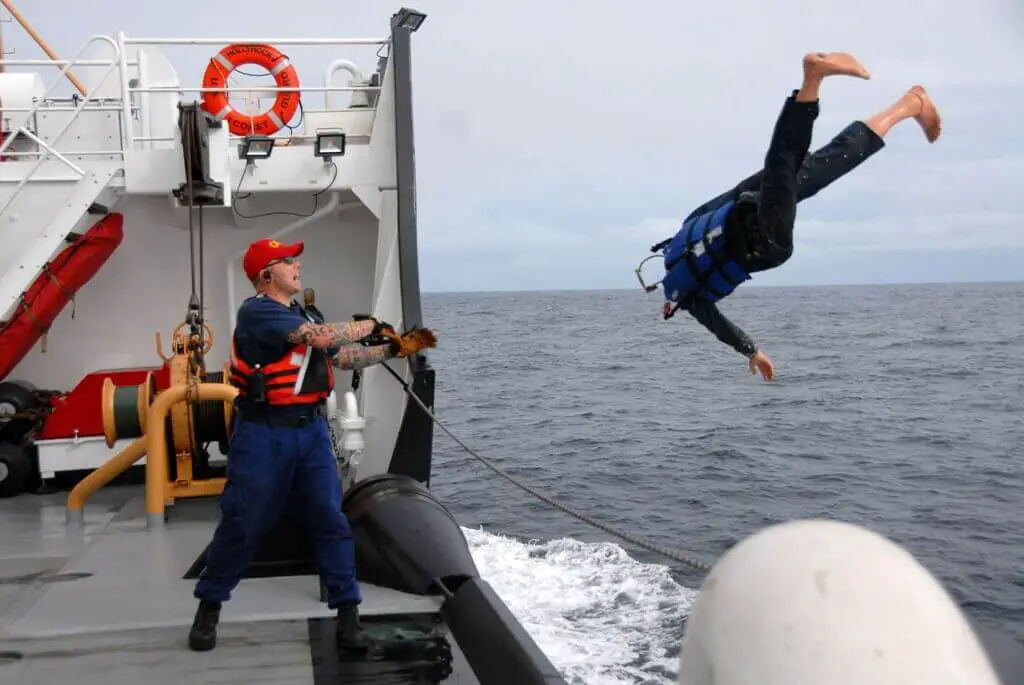From the very time a man falls over, till he is recovered back on board, every second counts. Every wrong action taken or an inappropriate decision you make, the results can be catastrophic, so as a prudent navigator it’s more than necessary to know the steps to be taken when this godforsaken Man overboard emergency arrives.
Three scenarios:
- Immediate action: The person overboard is noticed from the bridge and action is taken immediately
- Delayed action: The person is reported to the bridge by an eye witness and action is initiated with some delay.
- Person missing action: The person is reported to the bridge is missing
Factors that affects recovery
Always remember the rule number #1 is to stay calm and remember the word CALMER:
C : Capability of your engine plant
A : Assistance from crew and other vessels around
L : Limitations by weather; visibility, sea state, currents
M : Manoeuvring characteristics of your vessel
E : Experience of crew and level of training
R : Recovery method to be used.
Immediate action
- Mark and note the position
- Throw life ring to the person
- Sound three prolonged blasts on the ship’s whistle
- Note wind speed and direction
- Inform master
- Post lookouts
- Stand by engines
- Inform other vessels in vicinity
- Prepare recovery equipment
- Establish communication between bridge, deck and rescue boat.
Standard Recovery methods
1. Williamson Turn
Advantages:
- Makes a good original track line
- Good in reduced visibility
- A simple manoeuvre
Disadvantages:
- Takes the ship farther away from the incident
- Slow procedure
Execution:
- Put the rudder over full toward the pers
on (e.g., if the person fell over the starboard side, put the rudder over starboard full). - After deviating from the original course by about 60 degrees, shift the rudder full to the opposite side.
- When heading about 20 degrees short of the reciprocal, put the rudder amidships so that vessel will turn onto the reciprocal course.
- Bring the vessel upwind of the person, stop the vessel in the water with the person alongside, well forward of the propellers
2. Anderson Turn (Single turn)
Advantages:
- Fastest recovery method
- Good for ships with tight turning characteristics
Disadvantages:
- Used most by ships with a considerable power
- Very difficult for single screw vessel
- Difficult since the approach to the person is not straight
Execution:
- Put the rudder over full towards the person (e.g., if the person fell over the starboard side, put the rudder over full to starboard).
- When clear of the person, go all ahead full, still using the full rudder.
- After deviating from the original course by about 250 degrees (about 2/3 of a complete circle), back the engines 2/3 or full.
- Stop the engines when the target point is 15 degrees off the bow. Ease the rudder and back the engines as required.
3. Scharnov Turn
Advantages:
- Will take the vessel back to her wake
- Less distance is covered , hence saves time
Disadvantages:
- Cannot be used in an immediate action situation.
Execution:
- Put the rudder over hard towards the person (e.g., if the person fell over the starboard side, put the rudder over hard to starboard).
- After deviating from the original course by about 240 degrees, shift the rudder hard to the opposite side.
- When about 20 degrees short of the reciprocal course, put the rudder amidships so that vessel will turn onto the reciprocal course.




Leave a Reply